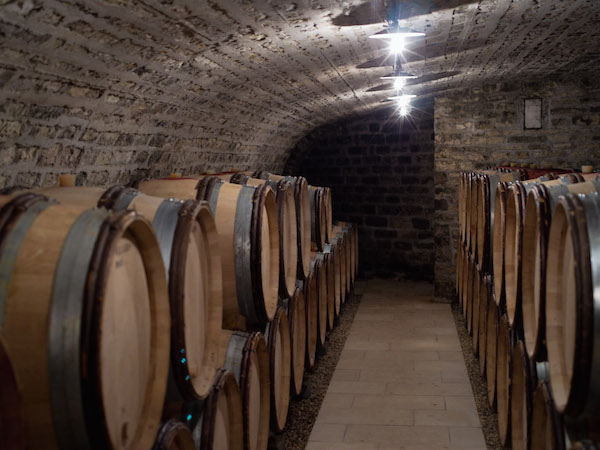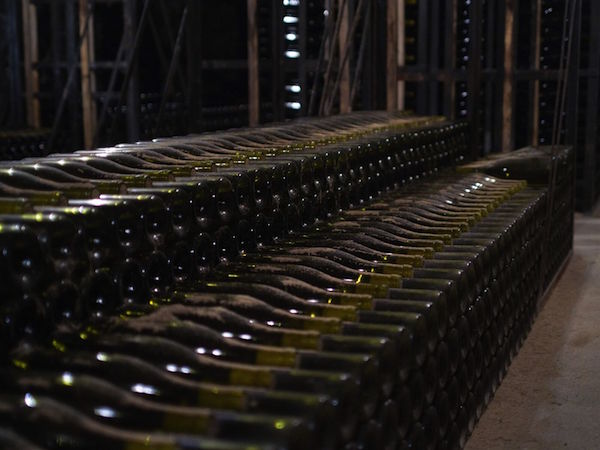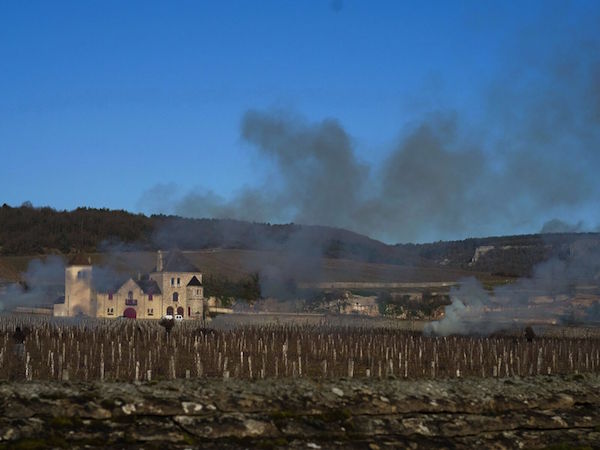by Wine Owners
Posted on 2017-01-30
This report is written on the back of 3 days of tasting cask samples and back vintages chez producers in Burgundy, hot on the heels of the London tastings.
We visited 13 small producers and tasted well over 100 wines in cellars, tasting rooms and producers’ homes, evenly split between the Cote de Nuits and Cote de Beaune.
The London en primeur tastings showed open wines with plenty of fruit. Those that were bursting with energy stood out, with some showing somewhat mute: a little flat or lacking in definition. Such are the challenges of transporting samples directly from barrel and expecting them to perform. Sometimes they do, often they don’t.

Barrel tastings in situ are a much better opportunity to judge wines individually and form a view on the vintage overall. Unsurprisingly the wines showed much more consistently than they had done in London.
If you can taste alongside prior vintages, as we did on a few occasions, that’s all the better as it provides useful context.
Comparisons have been drawn with previous vintages by commentators, notably 2005 and 2009 (presumably due to the hot summers they all have in common).
The producers don’t agree. 2009s show in a bigger, atypical mould. 2005s are considerably more tannic, built for the very long term, and most will need a good while yet. A few producers see 2005 as the greatest vintage of their generation, but many more look to 1999 as their benchmark.
2015 has the fruit and accessibility of 2012, with more volume and structure, and seemingly similar PHs. It’s an alluring vintage without the generally slacker character of 2009. Most of the successes were picked early, before the rains on 10th September. But some held off and still produced lovely wine. Others who harvested after the 10th have wines that seem to me to be too sweet, perceptibly lower in acidity and have less fine tannins. For the majority that were successful, the watchword was very little or no punching down, almost everyone opting for gentle extractions.
Some producers went for a high proportion of whole bunch fermentation. Those practising the inclusion of whole bunches do so to add an extra sense of freshness and complexity. It’s worth pointing out that stems actually slightly increase the PH, so lowering acidity in the finished wine. But they also contribute different, plant-derived flavours such as eucalyptus and mint, and it’s possibly this that gives the impression of making the wine feel light-footed. Perhaps the marginal lowering of acidity also contributes to a silkier mouth feel. Theoretically whole bunches also add a bit of structure, but I’d guess it depends on what percentage is used and often you don’t sense it.
Having tasted plenty of wines with and without whole bunches, it does seem that a common aspect of the vintage character is the silkiness of the tannins that are present irrespective of these types of winemaking decisions.

Another facet of 2015 is its lovely concentration. Pinot Noir excels in vintages that aren’t bountiful. Yields in 2015 were generally lower than in 2014, 1990 or 1999. This was especially true of the Cote de Beaune because the vines hadn’t fully recovered from the stressing effects of hail in the preceding years.
2015s are fruity, rich, with good density and show definition. On balance I personally preferred cooler sites – due to location, aspect or being in a windy spot. But others will favour out-and-out richness and a broad-shouldered character from the warmer sites. We all have our palate preferences and that’s as it should be. In any case there are no universal rules to successful buying in 2015 since the different vineyard characters shine through.
The greatest relative successes are the lesser appellations. There are some truly superb Bourgogne rouge and village level wines. You’d be seriously missing out if you just focus on trophy wines.
Village wines in 2015 are priced similarly to the levels of Premier Crus from just 2 vintages ago. Grand Crus are up by a third in many cases. If you go long on 2015 now and choose to rationalise in a few years’ time, there are no guarantees that you’ll get your money back.
If you ask which were my favourite communes in 2015 that especially shone, I’d plump for Pommard, Aloxe-Corton, Chambolle-Musigny, Morey-St-Denis and Gevrey-Chambertin.
Nevertheless, I was delighted by lovely wines from Auxey-Duresses, Santenay and Volnay. I thought Nuits-St-Georges and Vosne-Romanée were stunning successes in 2014, and it was no surprise that they showed at least as superbly in 2015.
By now you’ll have formed the impression that 2015 is a great vintage across-the board. Indeed it is. Yet not everyone is happy.

A proportion of long-term collectors are refusing their allocations this year for the first time, which may tell us something about the sustainability of these levels. Some of those ‘given up’ allocations are going to overseas buyers who spend vast annual sums with the big London merchants. But Burgundy producers are well aware of the grey market of en primeur releases originating out of the UK. For now, they are tolerant of it, but for how much longer?
Many merchants are concentrating allocations in the hands of their wealthiest buyers who spend by far the most throughout the rest of the year. And when I say spend, I mean spend. Their dependence on wine investors or wine accumulators makes it harder for them to allocate widely, and correspondingly difficult for Burgundy lovers to gain access to many Grand Crus and Premier Crus. In that fundamental sense the market has changed out of all proportion.
Overall takings at the 2016 annual Hospices auction were down 25% on the previous year (although it’s worth remembering the historic 2015 auction record was in aid of the Paris victims of the IS-inspired atrocities). There is less of 2016 to go around due to the catastrophic late April frosts from the tip to almost the toe of the Cote D’Or, but the quality of what was made is very good and it’s another warm vintage.
If you’re UK based, one other thing to consider is that the Sterling Euro exchange rate will be volatile over the next couple of years, and many will be betting against the Euro during this timeframe. Presidential election results in France in 2017 could have a major impact on the Euro’s relative strength or weakness.
With this in mind, and given the extremely high release prices in the UK for 2015 Burgundy, it’s worth revisiting 2014 for all those who held back.
With a few months or more in bottle, the red wines are showing superbly, with dark, ripe fruit, excellent minerality and sufficient structure to assure medium to longer term drinking.
2014 is a good vintage. It’s a more classic red Burgundy vintage than 2015, majoring on its lovely balance. Based on these tastings, I am delighted to have bought so much of it.
2014 white wines have wonderful intensity, and though enjoyable for their terrific concentration already, are going to age beautifully. I’ll be laying down my best bottles for 15 or more years, but will surely be tempted to dip in regularly along the way.
2013 was plagued by miserable weather. Producers needed to battle the elements, along with mildew and rot. They had to work assiduously all the way through. Perhaps because of this the best producers are proud of their achievements. Reds 'pinottent', that is to say they show fine, overt varietal expression in a really fresh, lifted mid-weight style, with one proviso: just so long as vineyard husbandry was top notch the wines were able to draw energy from the life of the soil and yields were managed to concentrate the berries.
2013 reds may be mid-weight, but the best have a lovely ethereal intensity, and village wines are starting to drink already; they have none of the hardness and excoriating acidity of 1996, or the sharpness of 2006. Tasted 2 years ago as barrel samples 2013s were particularly taciturn, rather dry and mute, as you might imagine the product of such filthy weather. Today they are transformed.
However much the 2015 white wines are being talked up as being fresher than one could have imagined given the heat of the year (and they are), they are simply not in the same class as 2014. They lack the same degree of definition, intensity and breeding with which that vintage is blessed.
With prices increasing for whites too, there’s really very little reason to go long on them this year, and it’s noticeable that recent merchant emails contain a lot more white wines still on offer compared with the mostly sold-out reds. I’ve only bought a few affordable cases for nearer term drinking, and thought the best vineyard sites of Mercurey in the Cote Challonaise showed particularly well. But I’ll be drinking them well before my 2014s.
As a parting footnote, don't overlook Moulin-a-vent in the Beaujolais. From the red granite soils of the appellation’s best terroirs and in the able hands of top Cote D’Or producers, Gamay shows what it can create: truly a noble grape.

Posted in:
Fine wine appreciation, on 2017-01-30.
Tags:
2015 Burgundy, Bourgogne, Burgundy, Burgundy campaign, Burgundy wines, Cotes de Beaune, Cotes de Nuits, fine wine, wine,

